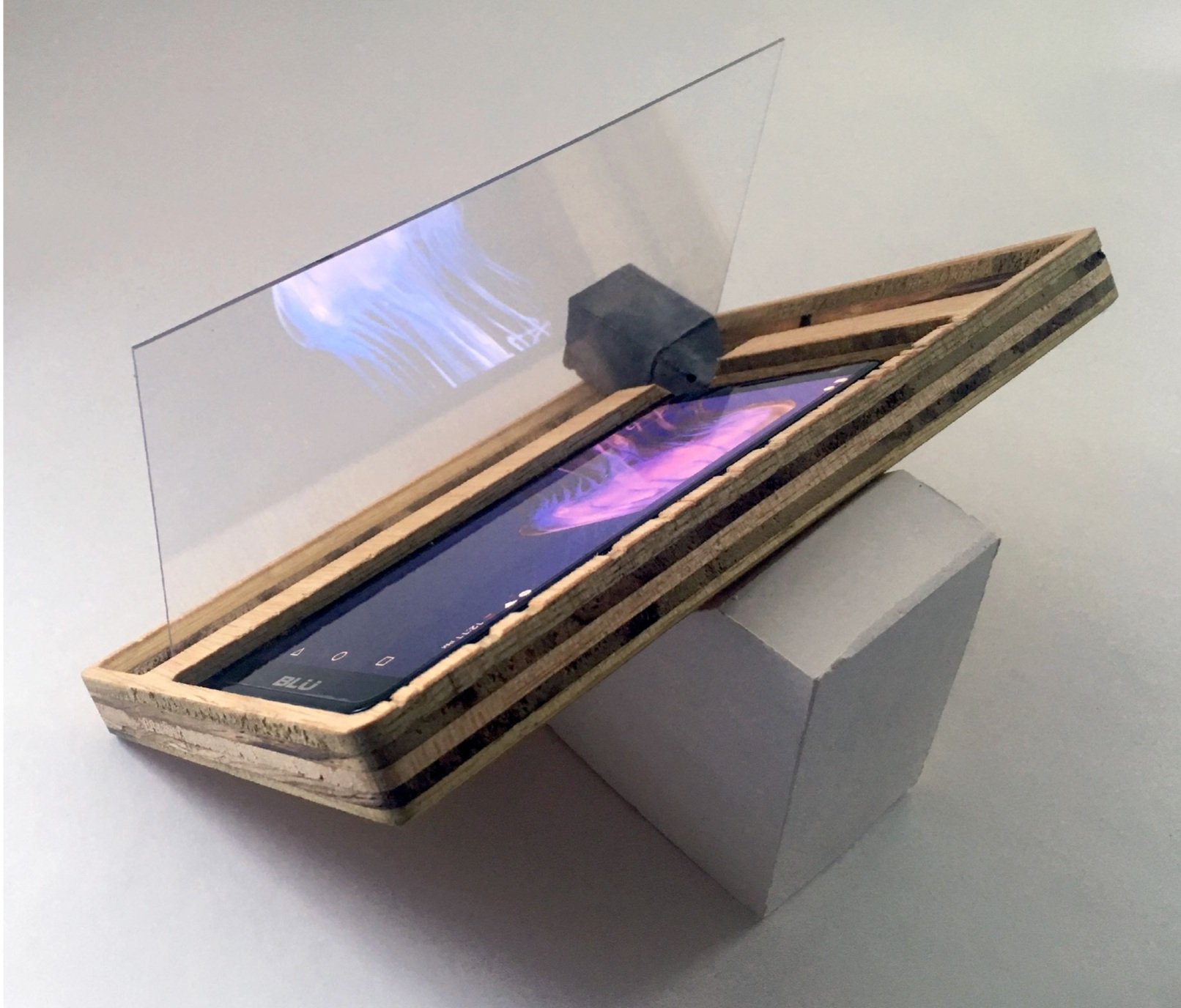
Design Daydreams
An interactive desk and augmented reality post-it note
How can we reimagine the objects around us to inspire new design ideas?
Design Daydreams is an interactive desk and low-tech AR ‘post-it note’ that projects digital inspiration images onto objects in the real world to provoke new associations and ideas.
Bringing a digital overlay to the physical creative environment
Design Daydreams was motivated by the limitations that designers found when using digital tools and screens in more exploratory creative activities; in more collaborative settings such as brainstorms, they preferred to interact with each other and their collections of inspirational content around tables, using paper, post-it notes and physical inspiration material. This exploratory brainstorming workspace is one of collage and bricolage; bringing together a plethora of inspiring physical and digital content and tools to be used as and when the designers need.
In order to bring the rich digital inspiration material from the ReFrame and Looking Sideways tools off the screen and back onto the brainstorming table to create even more inspiring juxtapositions, I experimented with several technologies: projection mapping, commercial AR headsets and mobile AR apps. However, as other researchers have noted (Saakes & Stappers, 2009), while these systems allow for detailed tracking of the objects they are augmenting with high-resolution imagery, I found them to be cumbersome and inaccessible to most designers. I wanted these digital inspirations to feel like the proverbial ‘post-it note’; fragments ideas quickly encapsulated visually on simple pieces of paper that can be juxtaposed to other media and ideas, similar to Weiser’s iconic ‘scrap computing’ Pads (Weiser, 1991).
Early prototype for Design Daydreams using HoloLens
Low-fidelity interfaces allow for more creative considerations
Lower-tech approaches proved to create a more seamless interface for the Reframe and Looking Sideways tools. For the ideation table, a projector is placed underneath a clear plastic surface covered in paper to project the tools onto a ‘screen’. Modeled after the shape of a drafting table, users can interact with the digital content displayed on the angled upper section of the table using a wireless mouse and keyboard and write notes with pen and paper on the horizontal lower section .
Design Daydreams ideation desk
Extending this digital table-top interaction, the Design Daydreams post-it notes uses the low-tech AR technique using the Pepper’s ghost illusion (De Angeli & O'Neill, 2015) to overlay digital images found in the Looking Sideways tool on top of sketches and objects in the surrounding environment. Using a mobile device in a simple carved wooden holder with a transparent film positioned at 45 degrees to the screen, users can create the illusion of overlaying digital images or text on their mobile device onto objects viewed through the film. Designers can position the holders horizontally, vertically and with the film at a distance from the holder to manipulate how the augmented image interacts with the physical objects behind the viewer. Styled to feel more like an object a designer would have on their desk than a piece of technology, this low-fidelity format is more accessible and feels as instantaneous and creative as how designers intuitively use post-it notes to record and assemble fragments of ideas in a brainstorm.
Design Daydreams AR post-it note
Sending images found in Looking Sideways tool to the Design Daydreams AR post-it note
Design Daydreams AR post-it note in use to trace an image
Publications
Design Daydreams: Juxtaposing Digital and Physical Inspiration | 2019
Philippa Mothersill and V. Michael Bove. In Companion Publication of the 2019 on Designing Interactive Systems Conference 2019 Companion (DIS ‘19 Companion).



